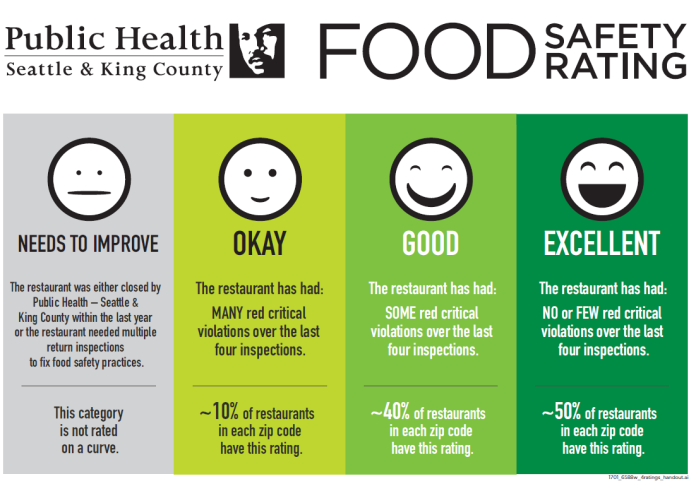Seattle-King County Public Health (SKCPH) has launched a new food safety rating system for all restaurants across the county. The food safety rating system is similar to those seen in Los Angeles County and New York City, but with a few key local differences. Patrons will be able to rely on the food safety placards to make quick conditions about whether they feel comfortable eating at the restaurant.
The basis for food safety ratings by SKCPH are red critical violations. These involve violations like failure to control temperature (e.g., not keeping food cold enough or not cook meats at the right temperature to kill food-borne illness), not washing hands, improperly storing food, and poor serving practices. SKCPH also has a less serious categorization of food safety violations, know as blue critical violations, that are generally not factored into the food safety ratings shown on placards.
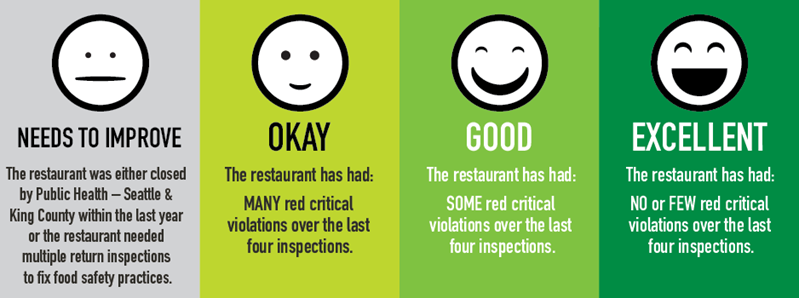
The food safety rating placard indicates the rating a restaurant received and the four types of possible ratings (with color and emoji):
- Excellent (means no or few red critical violations over the last four inspections);
- Good (means some red critical violations over the last four inspections);
- Okay (means many red critical violations over the last four inspections); and
- Needs to improve (means that the restaurant was closed by SKCPH in the past year for violations).
All four types of ratings indicate that a restaurant passed their recent health safety inspection and may continue operating by inviting the public in. However, the highest ratings indicate that a business is operating under the best food safety management conditions.
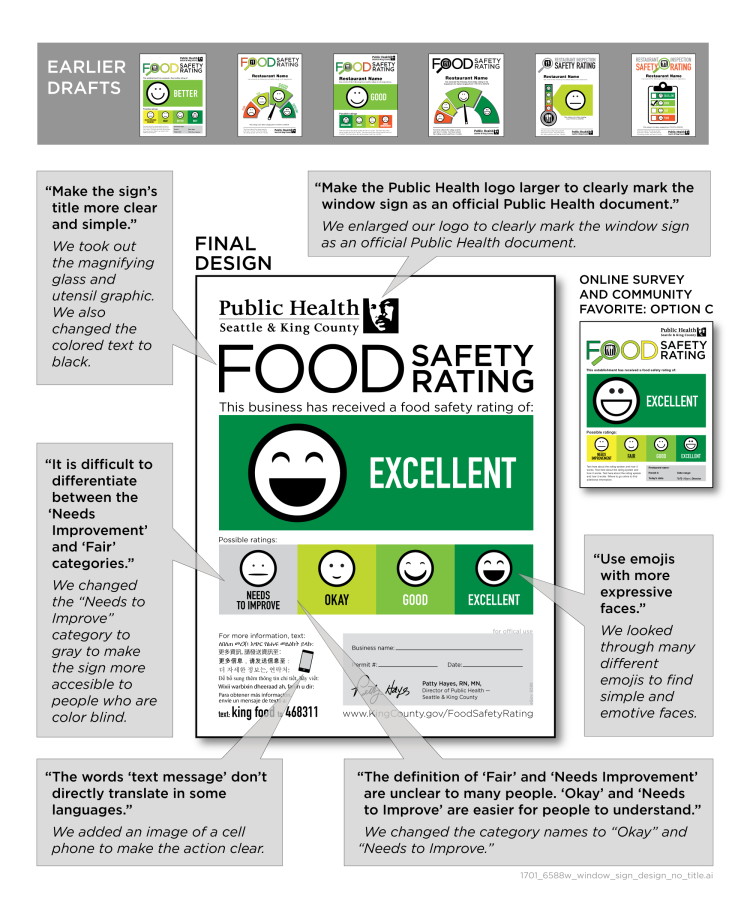
The food safety rating that a restaurant receives involves three primary factors: trend of food safety practices over time, scale of performance, and rating on a curve.
- The first factor considers a restaurant’s general trend for food safety practices over time, a feature that can be easily evaluated over the course of year given that food safety inspectors make three to four visits per year. The food safety rating will be weighted by averaging red critical violation points received from the past four food safety inspections.
- A second factor considers how well a restaurant performs with food handling and facility maintenance–what SKCPH calls “scale of performance“–instead of whether or not a restaurant passed an inspection. This is a more meaningful indicator for patrons than information on meeting minimum standards.
- Ratings are not just based on meeting minimum standards because health inspectors all have some variability in how they conduct inspections, which can affect a rating, and patrons typically dine locally. The rating system considers these factors by rating on a curve by area or zipcode. With the rating on a curve approach, most restaurants should achieve the Excellent rating, but a second big chunk may fall into the Good category:
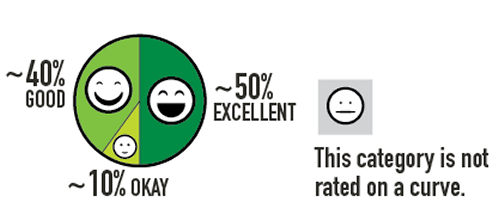
Food safety rating systems have caught on in the United States in recent decades. Los Angeles County implemented a system in 1998, one of the first in the nation. Sacramento County followed on in 2007 with its own version, and New York City in 2010.
The Los Angeles County and New York City systems are somewhat similar in their approach to ranking food safety on an A, B, and C scale assigned by points. Under the New York City system, the fewer points a restaurant receives from a health inspection, the better the rating; low or no points suggest that few or no minor or major violations have been observed. The Los Angeles County system, however, ranks restaurant food safety on a zero- to 100-point scale; the more points, the better the grade. Restaurants scoring less than 70 points do not receive a letter but instead must post the score, suggesting poor food handling practices and facility maintenance. Sacramento County uses a more straightforward system with “pass,” “conditional pass,” and “closed” placards that restaurants must post.
New York City studied the influence of its food safety rating system in an assessment from 2012. The assessment indicated that health outcomes quickly began to see observed improvement by reduced violations, fewer reported cases of salmonella, and even higher average grades:
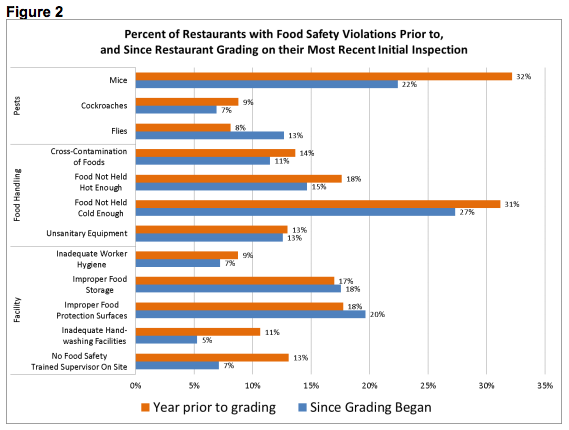
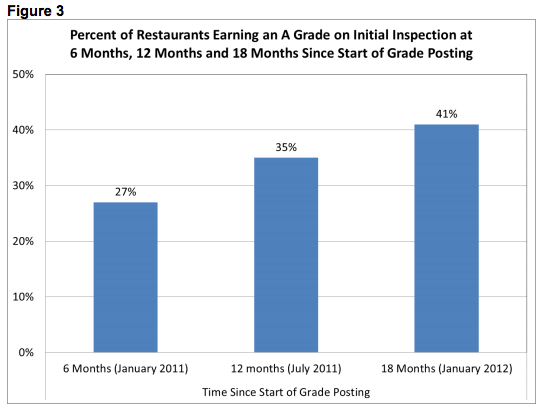
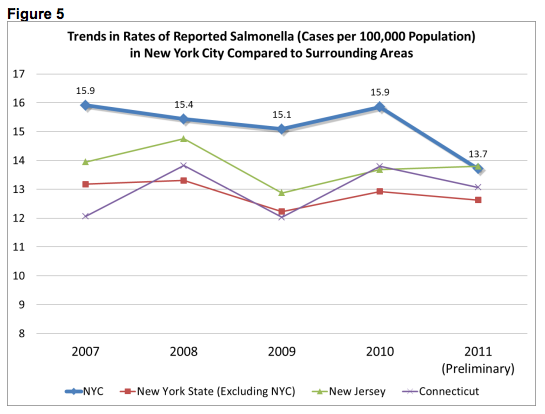
While there are certainly various variables that could have affected these observed outcomes, it does suggest that many restauranteurs were pushed to implement better food safety practices to achieve better ratings or risk losing patrons.
The King County program was launched on Tuesday and will be gradually implemented as food safety inspectors make visits to local restaurants to assess their food safety practices and cleanliness. Areas to see the food safety rating placards first will be in Seattle (north of Interstate 90), Shoreline, and Lake Forest Park. All restaurants in Seattle should have their placards issued and in place before summer, and full implementation across the county should be wrapped up in late 2017.
Stephen is a professional urban planner in Puget Sound with a passion for sustainable, livable, and diverse cities. He is especially interested in how policies, regulations, and programs can promote positive outcomes for communities. With stints in great cities like Bellingham and Cork, Stephen currently lives in Seattle. He primarily covers land use and transportation issues and has been with The Urbanist since 2014.

